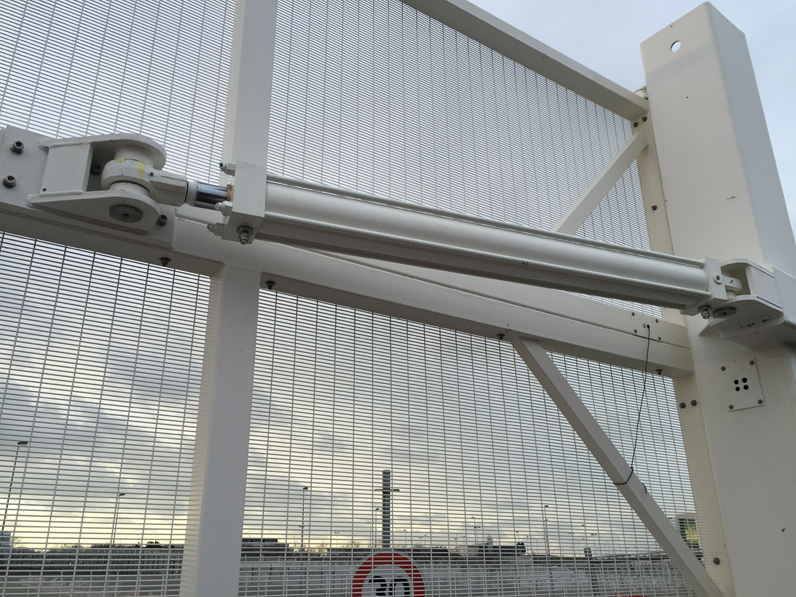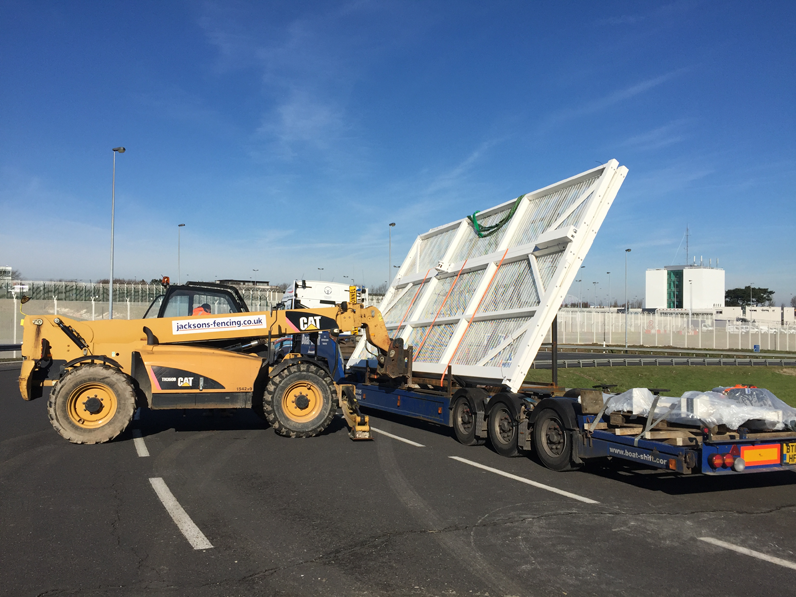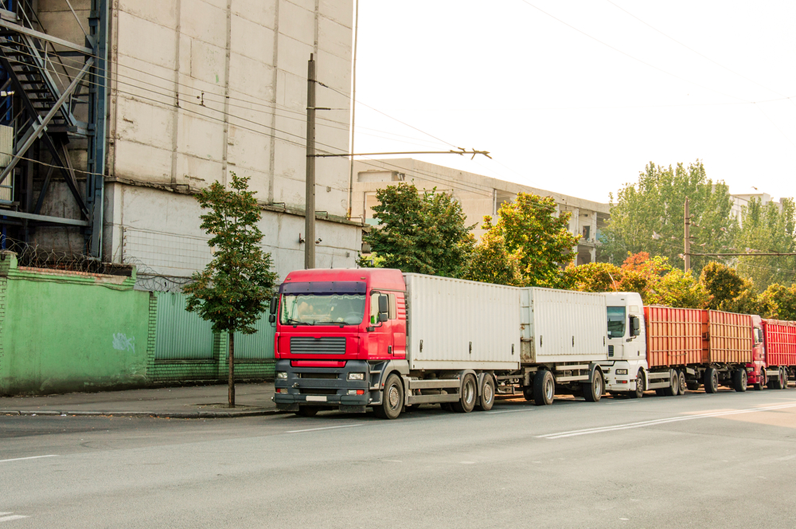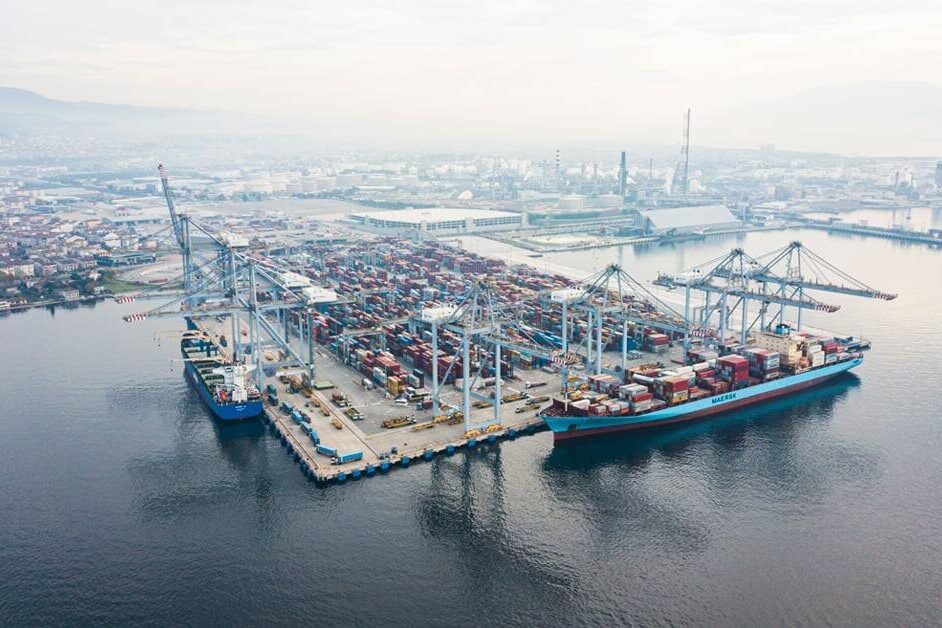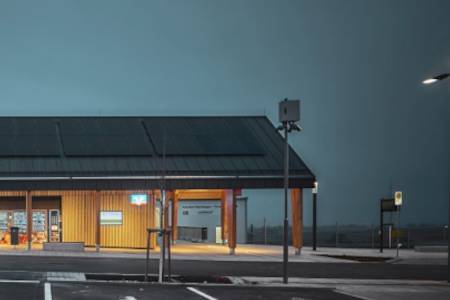Driver dangers – the road ahead for logistics and HGV security
Tim Compston, Features Editor at Security News Desk, heads out on the road to find out more about the security issues that today’s hauliers are facing as they try to keep the wheels of logistics running smoothly.
With the number of journeys taken by HGVs (Heavy Goods Vehicles) on the rise, worryingly, haulage operators are finding that their trucks, and the goods they carry, are now a favourite target for criminal gangs, especially when they are parked-up at service areas overnight. Even more concerning are the dangers they are driving into on the other side of the English Channel with people smuggling gangs and migrants blocking their path, physically threatening those behind-the-wheel, and breaking into trailers as they head back to the Port of Calais. As well as the inevitable disruption to their journeys of such actions – and fines for drivers who may unwittingly be carrying stowaways – food-related cargo is also at risk due to the potential for load contamination, resulting in an added hit to a haulier’s bottom line.
Crisis point
So what is the scale of the problem that hauliers are facing in France and what, if anything, is being done to put the brakes on vehicle attacks? Well, it is widely documented that the number of migrants at the so-called ‘Jungle’ migrant camp in Calais had soared in recent times to an estimated 10,000, all anxious to reach the UK, a rise that had been particularly marked over the past 12 months. Perhaps the taking down of the camp, which was completed last Monday, will make a difference. The importance of the Calais route to the British economy cannot be overstated with a massive £89 billion worth of UK trade passing through the port every year.
From an industry perspective The FTA (Freight Transport Association) – whose members operate half the UK fleet of good vehicles – has been a particularly vocal voice in calls for concrete action to be taken to protect drivers. Given this, the trade body was quick to welcome the announcement at the end of September by President Hollande that the Jungle camp in Calais is to close, with migrants moved to reception centres across France, something that the FTA, and others, had long been appealing for. Ultimately, the FTA feels that it is important to have a proper process in place to ascertain who the genuine asylum seekers really are. President Hollande set out his latest plans before attending an event to reveal details of a project to build a new dock and security area at Port Boulogne Calais. This, according to the FTA, will include a secure waiting and parking area for more than 800 trucks.
Like a warzone
Catching up with Julie Maddocks, a spokesperson for the Freight Transport Association about the state-of-play in Calais, she starts by recalling a recent visit where she saw, at first hand, the volatility of the situation on the ground: “It was two o’clock on a Thursday afternoon and riot police were having to contain gangs on the A16 with tear gas, which shows you just how horrendous it is over there at the moment. We [the FTA] actually described it as a warzone.”
Maddocks (pictured right) goes on to say that the FTA hears on a regular basis from concerned drivers about their fears: “They are telling us how genuinely scared they are. One driver described it as having his heart in his mouth every time he drives through the area. A lot of our members are asking their drivers not to stop within a hundred miles of the city of Calais and, beyond that, to make sure they have refuelled so they can keep on going until they get to a secure area. That being said we are still having drivers send us footage of migrants being ‘turfed’ off the back of trucks in the secure area as well. It is a really frightening situation.”
Underlining the ruthlessness of the people smuggling gangs active in Northern France, and lack of concern for the fate of migrants, Maddocks tells me more about a driver who rang her about an incident: “He had stopped about 100 km/70 miles out of Calais to pick-up a load and parked, at what he thought was a secure truck area, under security lights. What he didn’t know was that people smugglers had actually cut the secure lock on the back of his truck with a jewellery saw, opened up the truck, put in stowaways, welded the lock, and then put the secure seal back on. He ended up driving a refrigerated unit with eight migrants and it wasn’t until he actually heard them screaming and asking for air that he realised that he had them on board,” she revealed.
Maddocks believes there is absolutely no doubt that the migrants are desperate and that, as a result, they will take desperate measures to reach the UK: “I think that we are seeing a combination of individuals working together but there are definitely organised gangs, and people smugglers, as well, using the opportunity to try and get the stowaways on board.” Sadly, Maddocks reveals that the situation is spreading out well beyond Calais: “It isn’t just contained around there [Calais]. Yes of course that is one of the prominent areas we are focusing on because there are over 10,000 migrants according to a recent poll. When we started talking about this issue four years ago there were only 500 migrants.”
On the road
Offering a driver’s perspective on the current trajectory, Euan Fleming from Blair International who the FTA put me in touch with, agrees with Maddocks that the situation in and around Calais has deteriorated, significantly, over the past 12 months: “It has, especially since the Brexit vote came in. A lot of [migrants] are thinking that the drawbridge may be coming up pretty soon and they are making greater efforts, particularly at night.”
Giving an example of the sheer numbers of people involved, Fleming recalls how one his colleagues opened his trailer the previous morning only to find a ‘bus load’ of stowaways inside: “There would have been 50 or so in the back. You are supposed to clear the trailer out before you get to customs and immigration, or the UK sector in Calais, or be faced with a fine.”
Fleming continues that the driver in question was on the outskirts of Calais when he realised what was happening as those involved had not fixed the security seal back particularly well. In light of the seriousness of the situation, Fleming says, the driver didn’t want to stop to remove the migrants himself but proceeded to the French riot police so they could help: “Imagine if he had been at a petrol station or layby and opened the back and asked them to get out, he would have been faced with 50 guys, probably most of them armed,” reflects Fleming.
On the point of how to better protect vehicles and drivers, Fleming feels that things have escalated so much that, in his opinion, there is not really anything security-related that can stem the tide of attacks: “It is way past that stage. You could have kept them out before, you could have made a reasonable effort, but now you can’t. You have to wait where there is safety in numbers or the riot police. Then you have the problem if you let them [the stowaways] sit in too long you have rejected loads, it is absolutely horrendous.” When I bring up the much heralded UK-funded wall – dubbed by some in the media as the ‘Great Wall of Calais’ – planned to run for 0.6 miles on each side of the main road to Calais Port, Fleming doesn’t pull his punches: “There is not a driver coming through Calais that thinks that this wall will be slightest bit of use. It is a sticking plaster and a really short one at that.”
Ultimately Fleming, speaking before recent events, said that the consensus amongst most drivers was that they wanted ‘the Jungle’ camp removed from Calais. Now that the camp has been dismantled, in a recent statement, French President François Hollande was adamant that no one will be going back in.
Security measures
Returning to the thoughts of Julie Maddocks from the FTA, in terms of specific security measures, she reveals that on her recent visit to Calais she witnessed drivers and their vehicles having to pass through a succession of checks: “A driver of a truck, between arriving at the gates and getting on a ferry, needs to go through 14 separate checks which can take up to three-and-a-half hours to get through. The drivers welcome this because 99 per cent of them are law abiding citizens just trying to get to the UK to deliver the goods.”
Regarding the nature of the checks already implemented in Calais, Maddocks explains that these range from scanning of the vehicles, heartbeat monitors, weight distribution, dogs, and physical checks: “Interestingly, if the police, the Border Force, whoever in France, believe that there is someone on board – there is a clandestine – it is the drivers that have to open up the truck and get on board the unit to physically check it out.” Maddocks speculates that because so many checks have now been introduced, and enforced, at the Port of Calais – and indeed the Eurotunnel – the opportunities for would be stowaways to make it to the UK are more limited. One unintended consequence of this, she says, is that the people smuggling gangs are actually extending their area of action further away from Calais.
On the subject of where responsibility lies should stowaways be found in a vehicle, Maddocks says that the onus remains very much on the driver: “The potential fine is up to £2000 per individual and that doesn’t fall on to the desk of the operator it is actually charged to the driver.” In the end, she confirms that the FTA is working very closely with the UK Border Force and that FTA members and drivers are encouraged to become part of the Border Force Civil Penalty Accreditation scheme: “This helps them to show evidence, should things go to court, of the different measures they have taken to combat individuals getting on board.”
The heart of the matter
Considering ways to detect if there is a human presence in vehicles, Rob Wallander, the Managing Director at Scan-X Security – the UK partner for ENSCO’s MicroSearch – reckons that the ability to sense the subtle vibrations caused by a human heartbeat is a good route to take compared to other approaches: “There is no way of stopping your heart from beating, whereas there are CO2 readers that people put in the back but they [stowaways] basically get around that by breathing through a pipe through a hole in the truck, maybe, or breathing into a bag. By reducing the CO2 at the back of the vehicle the C02 readers can be fooled, to a certain extent, and if the person has only just got into the vehicle before it is due to be screened the CO2 level in the vehicle won’t be very high.”
In terms of how a solution like MicroSearch – which consists of a laptop, digital control box and three to five sensors – is applied in practice, Wallander says that inside a search area a vehicle simply pulls up and the magnetic seismic sensors are deployed on cables: “You would put one of these on the front of the vehicle and one on the back and a sensor on the floor to eliminate ground vibrations. We work on that sort of principle and it takes 10 – 15 seconds from the time you put the sensors on to get a reading if someone is in the truck or not and roughly where they are sitting.” The sensors, explains Wallander, work in a similar way to those used to measure earthquakes but instead the focus, by placing them on a vehicle’s frame, is to detect the vibrations caused by a human heartbeat.
Smart defence
When it comes to vehicles being targeted by criminals intent on stealing their cargo or people trying to stowaway, Aidan Robb, the Managing Director at Donegal, Ireland based Cargo Defenders Ltd, believes that there is a pressing need for new thinking to protect this weak link in the supply chain.
For Robb it is all about making sure that a vehicle is not the easiest target in the first place which, wwhe stresses, starts from something as basic as having a good lock on the back door: “That is just your visual deterrent and then, after that, is where our system comes in to monitor the back door for unauthorised access.”
Essentially with, what Robb refers to as Cargo Defender – Door Secure, once a box trailer’s doors are opened, outside of a set location or when the system is armed, the system sets off an audible alarm: “This acts as a deterrent to any intruder by, basically, scaring them. If they try to hide inside the trailer when the alarm is still sounding it is going to be very uncomfortable, and nearly impossible for them, because of the high decibels.”
According to Robb whenever authorised access happens and the alarm goes off it is possible to set-up the system so that an alert goes back, automatically, to a control centre and the appropriate contacts are informed: “This can even be sent to the driver if he is away from the truck, at a truck stop, to alert them that somebody is tampering with the trailer.”
 Closing the curtain on attacks
Closing the curtain on attacks
Moving on to the gearing up of defences on the curtain sider front, this, in Robb’s estimation, is an even more testing scenario security-wise, because of what they are made of compared to a box trailer: “You just have a lot more points to monitor. They [criminals or stowaways] can get in through the canvas roof of a euroliner, they can get in by opening the curtain poles or by slashing the curtain or by opening the back door. You have to monitor all possible access points into the cargo area which is what our system does.”
Going into more detail on the way that attacks can unfold, Robb explains that starting from the curtains, illegal or clandestine migrants would look to cut a hole in the curtain: “A few guys would climb in and they would then tape-up the curtain from the inside, with a temporary repair, so whenever the driver does his inspection he won’t notice the tear. What our system does there is that we have ‘smart’ trailer curtain sensors. They detect somebody attempting to cut the curtain so once the knife goes into the curtain it sets off an audible alarm and sends an alert back to the control centre. So again it basically scares the intruders so they turn and run.”
Robb stresses that as well as monitoring the trailer curtains, the curtain poles themselves need special attention: “A lot of times they know how to open trailers so they will cut the TIR cord – you know the security seal – and they will open the curtain in the conventional way with the curtain pole and tighten it all back up.” To demonstrate how sophisticated attacks are becoming, Robb say that the migrants and the people smugglers will even glue the TIR cord back together so it looks like it has not been tampered with: “To address this our system is able to detect if someone opens the curtain poles as an unauthorised access and again sets-off the system and the same thing with the back door,” he says.
To conclude, Robb adds that, as well as having a monitoring system like that offered by Cargo Defenders in place, there is an onus on drivers to make sure they do a walk around and inspect all of the cavities underneath the trailer, underneath the truck and basically all of the different places where people – migrants – might be hiding out.
Massive automated gate swings into action at Eurotunnel
Jacksons Fencing, one of the UK’s leading designers, manufacturers and installers of security fencing and access control systems, reports that it has installed a 4m x 14m fully automated double leaf swing gate as part of security updates at the Eurotunnel Coquelles site.
With each post weighing over a tonne and each leaf measuring 7m wide, weighing 1600kg and operated by 125mm bore x 1300mm stroke, rams weighing over 200 kilos and capable of lifting over 19 tonnes – the equivalent to a full double decker bus – this massive gate is anything but lightweight, yet is no slouch, according to Jacksons Fencing, with opening and closing operations able to be completed within 60 seconds.
The new gate is one of the largest automated swing gates Jacksons has ever designed, manufactured and installed, includes full safety features and is CE Marked in compliance with the EU Machinery Directive. Constructed from hot dip galvanised steel, to provide protection against corrosion inside and out, before being powder coated white in-house, the gates were manufactured at Jacksons Kent-based HQ, located just 12.4 km from the UK entrance to the Eurotunnel in Folkestone.
The Jacksons Fencing contracts team based in Calais, working in harness with the design and manufacturing teams in Kent, ensured a fast and accurate installation onto pre –installed posts with hanging and adjustment taking around four hours. Peter Jackson, Jackson Fencing’s CEO commented: ‘While we have designed and manufactured larger sliding gates, the sheer size, operating environment and performancerequirements of this gate presented a few challenges, especially given the short deadline which needed to be met. I’m delighted and proud that the teams here and in France proved that they had the flexibility and determination to rise to this exacting challenge.’
Tyco Security Products boosts portfolio with NEDAP AVI vehicle/driver identification readers
Tyco Security Products has announced the integration of NEDAP AVI vehicle and driver identification technology with the C•CURE 9000 security and event management solution, part of Tyco’s complete physical access control solution. When integrated with the C•CURE 9000 security and event management solution, NEDAP AVI identification readers can identify vehicles and/or people from long-range distances. This makes the readers ideal for parking access applications, managing logistics, and for weighing installations and mining safety applications. NEDAP AVI identification systems ensure that only vehicles with authorised drivers can access restricted areas while keeping traffic moving through access gates.
Vehicles and their operators can be authorised for entry while their vehicles are still moving, and can be identified by the readers through closed windows, increasing both passenger safety and overall efficiency.
[su_button url=”https://www.securitynewsdesk.com/newspaper/” target=”blank” style=”flat” background=”#df2027″ color=”#ffffff” size=”10″ radius=”0″ icon=”icon: arrow-circle-right”]For more stories like this click here for the Security News Desk Newspaper[/su_button]



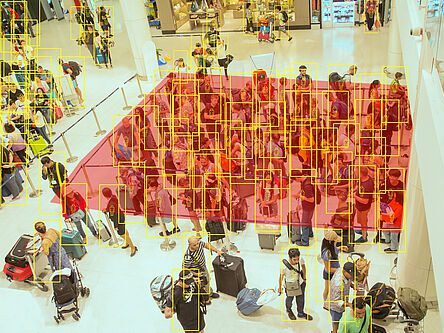
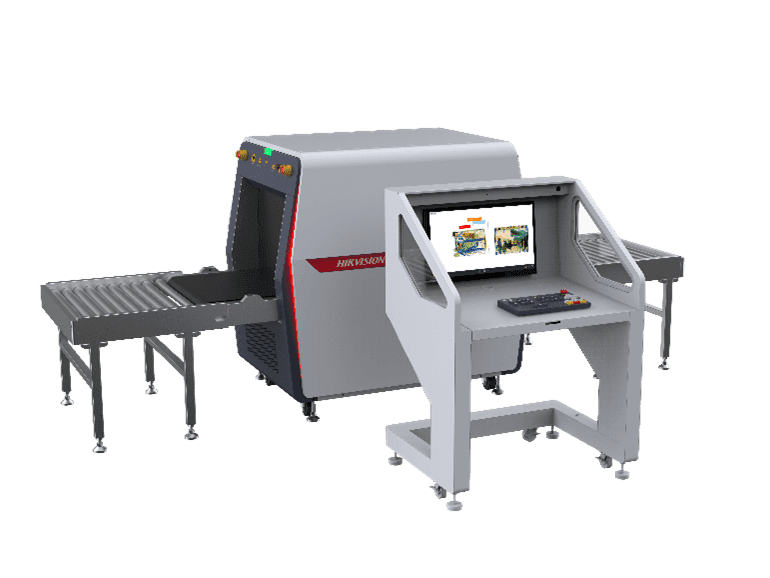












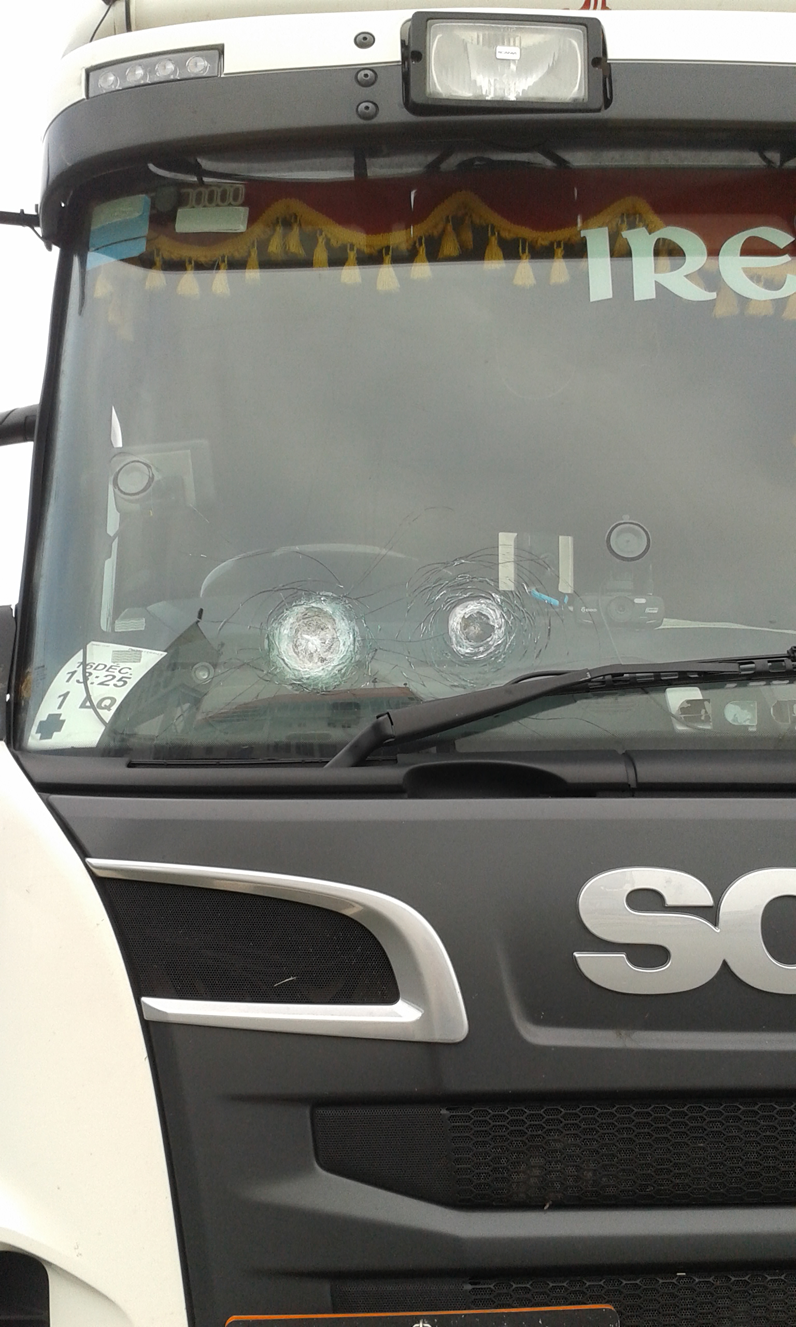

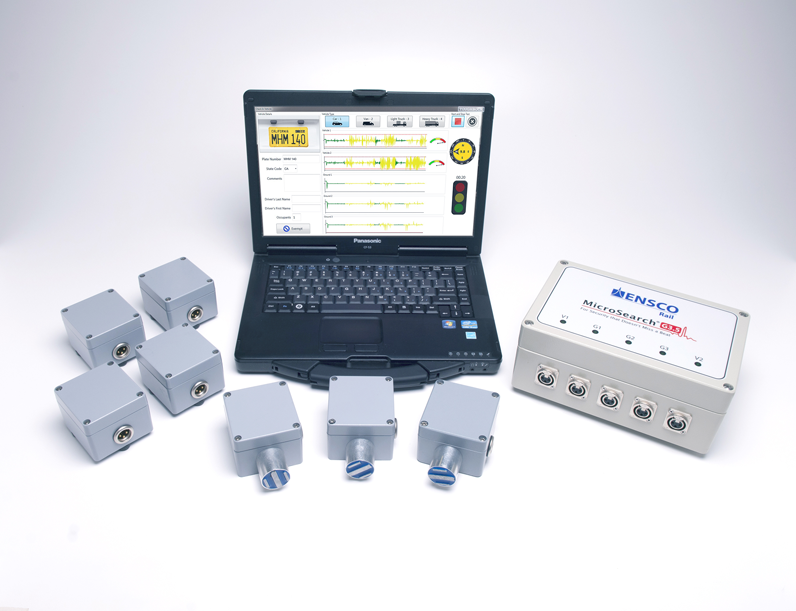
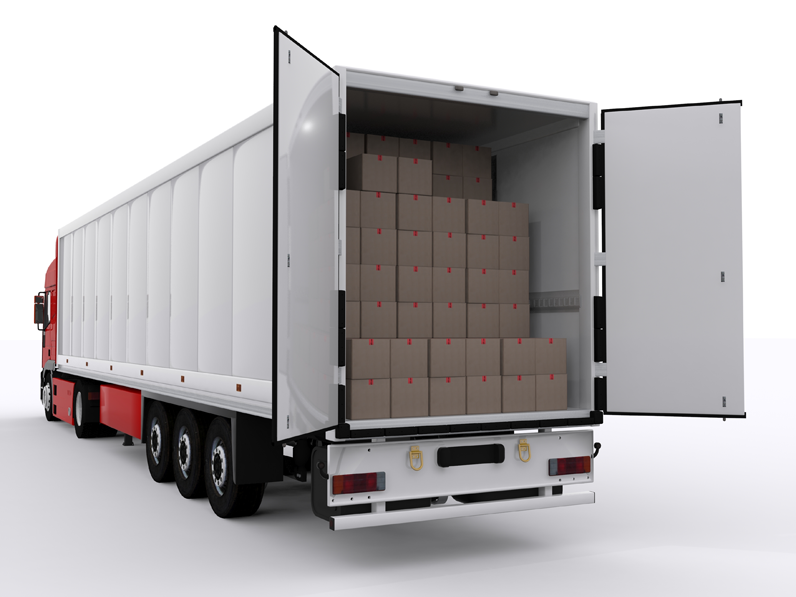 Closing the curtain on attacks
Closing the curtain on attacks